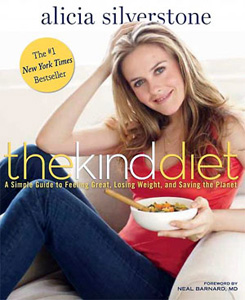By Jenilee Matz
If you doubted that veganism is gaining popularity, then let this be a sign that it is. Former President Bill Clinton is a vegan, and let’s be honest — if Bubba can do it, so can anyone.
What’s a vegan? Vegetarians don’t eat meat, but vegans take it a step further. A vegan doesn’t eat meat, dairy, eggs, or other animal products such as honey. A vegan eats a strictly plant-based diet. People choose to follow this diet for health, environmental, or ethical reasons.
At first glance, following a vegan diet may seem overwhelming, if not impossible. But it doesn’t have to be. These five tips can help make the transition to veganism easier:
1. Don’t go cold turkey on animal products. Instead, gradually wean yourself off non-vegan foods. If you’re making a chicken stir-fry, only use half your usual amount of chicken and replace the other half with tofu. Continue to reduce the amount of animal protein you use, and increase the amount of plant-based protein until you don’t miss the animal protein at all. Try these other vegan substitutions:
- Use lentils in place of ground beef in meatloaf or burgers.
- Try black beans in tacos or burritos instead of steak.
- Add white beans to marinara sauce instead of meat.
- Top your salad with edamame (soybeans) instead of chicken.
2. Know where to get your nutrients. It can be tricky for new vegans to get all their necessary vitamins and minerals since they’re no longer getting them from animal proteins. But feeling healthier will make sticking to your veganism easier. Here’s how to have a well-rounded vegan diet:
- Protein: Chickpeas, lentils, peas, nuts, nut butters, and whole wheat bread.
- Fat: Nuts, nut butters, avocado, coconut, and oils.
- Vitamin D: Vitamin D fortified orange juice, soy milk, and rice milk.
- Calcium: Dark green leafy vegetables, tofu made with calcium sulfate, and calcium-fortified soy milk and orange juice.
- Iron: Dried beans and dark green leafy vegetables.
- Omega-3 fatty acids: Flaxseed, canola oil, tofu, edamame, and walnuts.
- Vitamin B12: Nutritional yeast.
- Zinc: Whole grains, legumes, and nuts.
3. Know what to swap. You can still make some of your favorite dishes. You just need to make some swaps to make them vegan. In place of:
- One egg: Use ¼ cup of tofu, 1 small banana mashed, or ¼ cup of applesauce.
- Cow’s milk: Try soy, rice, or nut milk.
- Cheese: Try soy cheese, which is available in many grocery stores. Crumbled tofu can replace ricotta or cottage cheese in dishes.
 4. Find vegan inspiration. There is no shortage of vegan cookbooks out there. A quick trip to the bookstore or your local library will show you just how much vegan information exists. There’s also a host of vegan food blogs that offer tips, recipes, and vegan product reviews.
4. Find vegan inspiration. There is no shortage of vegan cookbooks out there. A quick trip to the bookstore or your local library will show you just how much vegan information exists. There’s also a host of vegan food blogs that offer tips, recipes, and vegan product reviews.
Two popular ones that are full of delicious recipes and photographs are Peas And Thank You and Oh She Glows. Once you taste these bloggers’ recipes for Yukon gold black bean basil burgers or pumpkin pie brownie cupcakes, you’ll wonder why you ever gave pause to becoming a vegan.
5. Focus on what you can eat … not what you can’t. You may be surprised to learn that some of your favorite foods are already vegan: including
Other dishes can easily be made vegan. Try pizza without cheese, soy hot dogs, soy ice cream, and bean tacos without cheese and sour cream.
Adopting a vegan diet may seem challenging at first, but armed with these tips, you’ll be able to make the switch successfully.
Got a good “going vegan” story to share? Let us hear about it in the comments section below.
